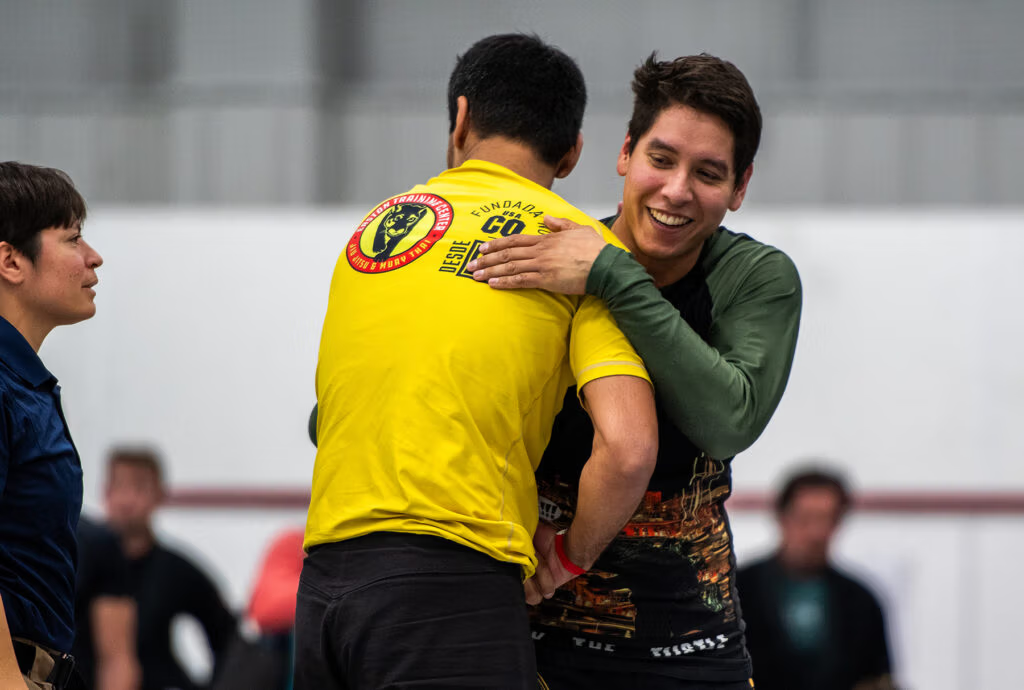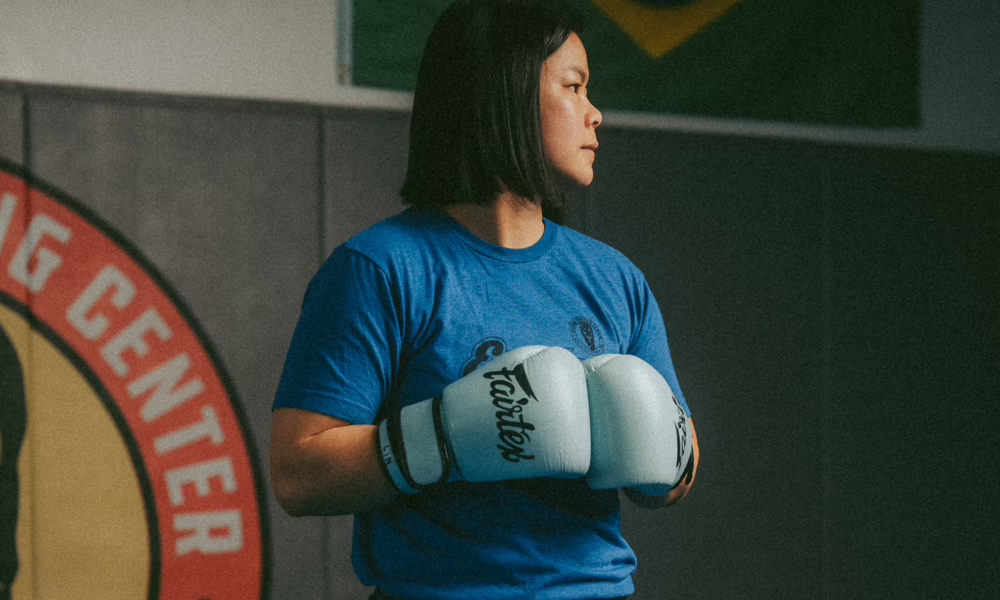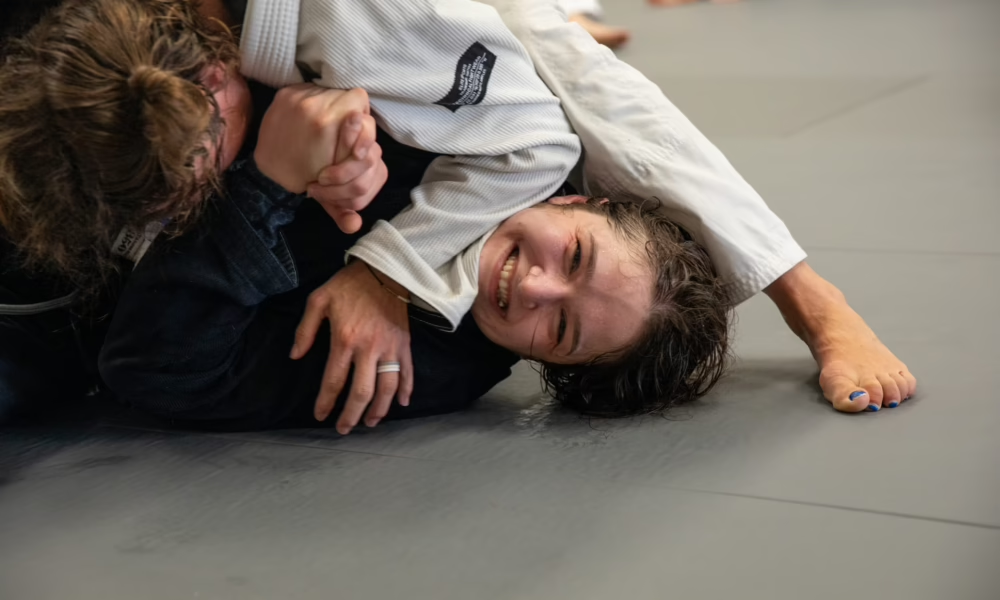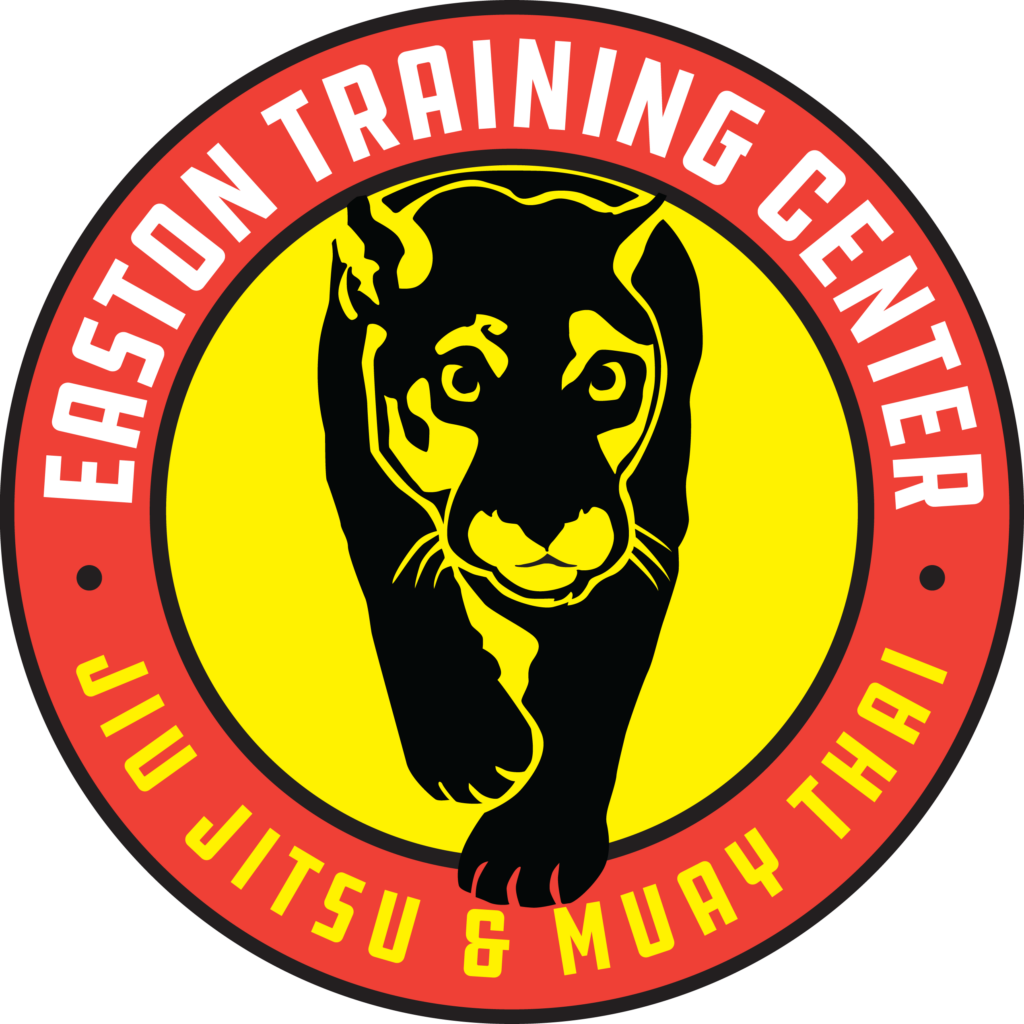The History and Benefits of BJJ
By Mike DeTraglia
Someone once told me that Brazilian Jiu-Jitsu (BJJ) was nothing more than the art of folding clothes, but with one interesting stipulation…..people are still in them. Others refer to BJJ as ground karate. For me, BJJ is not just a workout, a competitive activity to fill my time, or an activity that I participate in to prove my dominance over another human being, but rather a way of life. BJJ was introduced to the American mainstream by BJJ’s first family, the Gracies, twenty-five years ago last month, right here in our state of Colorado. Colorado was the only state that would give Rorion Gracie the permits needed to have a no-holds-barred fight promotion, or “Vale Tudo” fight as it is known as in Brazil. So, if anyone reading this has ever watched an Ultimate Fighting Championship (UFC) event, you can thank the Rorion Gracie and John Milius, a writer and director of many T.V. shows who happens to also be one of Rorion’s first students. Milius helped his professor (the title given to BJJ black belts) sell the idea of the UFC to American T.V. executives and the rest is history.
However, this conversation is not about the UFC, it is about the history of BJJ, philosophies of the Gracie family, the many benefits of training BJJ, and how the Gracie family’s life work has improved my life beyond my wildest dreams. I remember watching the likes of Rickson and Royce Gracie demolishing their opponents (in many cases, opponents much larger than them) as a young man, but it would be more than twenty years later that I, myself, would take up the challenge of learning this “gentle art”, as it is often referred. Don’t let the nickname fool you though, BJJ only has this nickname because it is a martial art that allows you to win without striking (unlike boxing, karate, or traditional Jiu-Jitsu from Japan) and uses only body leverage and mental agility. It is said that it takes roughly ten years to earn a BJJ black belt, which is four to five years longer than most other martial arts. Upon receiving your black belt in BJJ, you are considered to be equivalent to a recent college graduate in their respective field, still relatively inexperienced. It takes a lifetime to become a true master of this art. BJJ is not for the faint of heart; it truly requires a serious commitment on the part of the student, but the rewards of training BJJ far outweigh the time that is required to be proficient in BJJ. Whether you are looking for a great workout, looking to learn self-defense; whether you train for one month, one year, or the rest of your life–BJJ will challenge you to become the best version of yourself.
History: The Gracies Find Jiu-Jitsu
Traditional JuJitsu (far east spelling of the martial art) is said to have originated in the mountains of India more than 2,500 years ago, spreading through China, and eventually landing on the island of Japan roughly 400 years ago. So, what exactly is JuJitsu, and how did a martial art from the far east make it way to South America, you ask? According to Renzo Gracie (a third generation Gracie fighter and the Professor from whom my academy draws its Jiu-Jitsu lineage), “the guiding principle behind Ju (or Jiu) is the idea of a weaker (gentler) force overcoming a stronger force through the application of technique, or Jitsu, rather than strength and aggression. Reduced to its core, JuJitsu is the employment of intelligence and skill to overcome brute strength and aggression.” JuJitsu made its way to Brazil in the early 1900s, when a Japanese immigrant named Mistuyo Maeda moved to the Amazon region of Brazil to help with a Japanese immigration colony. Maeda was a Judo and traditional Japanese JuJitsu teacher who was known to compete in no-rules fighting challenges. This was a custom from the far east. The masters of the top fighting schools in China and Japan would challenge each other to see whose martial art was the most effective. As fate would have it, a man named Gastao Gracie would eventually see Maeda compete and these two men became fast friends. Gastao would help Maeda get set up in his new land and to show his appreciation, Maeda taught Gastao’s eldest son, Carlos, traditional Japanese JuJitsu and Judo. Carlos quickly became Maeda’s top student and would fill in for Maeda as the instructor when Maeda’s obligations to the Japanese colony would pull him away from the academy. To establish credibility in the fighting world, Carlos and his brothers took a page out of Maeda’s book and began their own no-rules challenges and thus Gracie Jiu-Jitsu was born. Due to poor representation of the translation of the Japanese language at the beginning of the 20th century in Brazil, Brazilians began spelling JuJitsu as Jiu-Jitsu as we know now it presently.
Helio Gracie Changes the Game
However, it wasn’t until Carlos’ youngest brother, Helio Gracie, got involved in the family business that we would recognized Gracie Jiu-Jitsu (which eventually became synonymous with Brazilian Jiu-Jitsu) as we do today. Helio was a frail child and often fell victim to fainting spells when he would climb a simple flight of stairs or over exerted himself in any way. At fourteen, Helio moved in with his brothers who lived and taught Jiu-Jitsu, but due to his condition, Helio was not permitted to train with his brothers. Legend has it, after two years of simply watching his older brothers train and memorizing all the moves, Helio was put in an odd predicament. A student showed up for a lesson, but Carlos was nowhere to be found. To protect the family fighting name, Helio offered to begin the lesson and the student accepted. Carlos showed up as the lesson was wrapping up and apologized profusely for his tardiness to the student and the student replied, “No problem. I enjoyed the class with Helio very much. If you don’t mind, I’d like to continue having classes with him from now on.” For the first and only time in BJJ history, a student promoted his instructor, a man who had never actually rolled before!
Even though this was an amazing accomplishment for Helio, he realized that many of the moves that he had memorized from watching Carlos and his other brothers were not very effective for his frail frame. Through the process of trial and error and adding leverage to the equation, Helio was able to reduce the amount of force, or brute strength, that was required to perform the traditional techniques. Thus, a revolution in Brazilian fighting had begun. Even though the Gracie clan had built quite the name for themselves prior to Helio’s emergence on to the fighting scene, it was Helio–weighing a mere 140 lbs and standing only 5’9’’ tall–who amazed a nation. In Helio’s book Gracie Jiu Jitsu, the author notes, “First Lady (of Brazil), Darcy Vargas, recognizing the tremendously positive image of this ‘small giant,’ once invited Helio to the presidential palace and pleaded with him to, ‘Save the Brazilian youth.'”
UFC 1: The World Meets BJJ
Fast forward to 1993, when the Gracie clan had to make a decision on who would represent Gracie Jiu-Jitsu in Rorion’s event to determine the world’s most effective martial art. A betting man would have placed his money on Rickson Gracie because he was the most accomplished Gracie fighter. Helio and Rorion, however, felt that picking Rickson would not show the world the true effectiveness of Jiu-Jitsu because Rickson was a beast who would roll over many opponents with ease. Sticking to Helio’s model, the Gracies decided to pick Royce Gracie to show that a smaller skinnier man could defeat a much larger opponent through the family’s fighting style. The gamble paid off and Royce did not only win the first ever UFC event, but the second event as well, thus maintaining the Gracie family’s 65 year unbeaten streak.
This began the world’s love affair with BJJ. Soon after the success of the UFC events, Hollywood came calling. A-listers like Mel Gibson, Keanu Reeves, and later on, the likes of Ashton Kutcher and Demi Lovato were lining up to learn Jiu-Jitsu from the Gracie family. Movied incorporated BJJ in their fight choreography, police forces and military personnel contracted the Gracies for hand-to-hand combat training, and the Gracie family’s wish to bring their beautiful art form to the world stage had finally been realized.
Many martial artists would argue that martial arts is all about honor and respect, but don’t tell Gordon Ryan that. Earlier this year, Ryan (a very high-level BJJ practitioner) said, “I love how people say ‘BJJ is built around respect and honor.’ No, it’s not! It’s built around savage Brazilians kicking the s*** out of people just because they could. Storming gyms of other martial arts and fighting their instructors just to show how superior BJJ was. And while I think that’s f****** awesome, it’s not the fairytale you guys tell about respect and honor. This sport is built around real men who didn’t give a f*** and took what they wanted.” I couldn’t disagree more with this statement because I think it misinterprets the spirit of that kind of competition. The tradition of “dojo storming” dates back to ancient China and Japan. In Asian martial arts culture there was nothing more honorable and respectful than to challenge other martial artists to determine whose art form was more effective. So, I would argue that the Gracie family challenging other Brazilians on their turf did nothing but pay homage to this ancient tradition.

The Benefits of BJJ
Now that we know the history of BJJ, what BJJ is, and some of the philosophies of the Gracie family, how exactly can BJJ benefit you? Well, first and foremost, BJJ will make you able to defend yourself against a larger, stronger, and faster opponent. But, BJJ is not just about self-defense. According to Dr. David Ley in his article for Psychology Today entitled The Psychology of Brazilian Jiu-Jitsu, in today’s society, humans tend to lack physical contact and the constant physical contact in BJJ drives the BJJ experience. This is because our bodies produce Oxytocin through physical contact, a hormone that is often referred to as the “cuddle” or “empathy” hormone, which is released in our bodies during physical contact. Dr. Ley also believes that this is why friendships develop so quickly and deeply amongst BJJ students.
It doesn’t stop there, students of BJJ often find that other aspects of their lives become easier. Now that may sound like a stretch of the imagination to you, but I can assure you that having to work through a 200-pound-plus man sitting on your chest and being forced to quickly figure out how to get him off of you makes most of life’s trivial scenarios comparatively very easy to sort out. BJJ students also report having less aggression and anger because it is left on the mats, with the added bonus of relieving the day’s stress. One simply does not have the time to dwell on next month’s rent, cell phone bills, or problems at work while your opponent is trying to use your Gi (BJJ uniform) to choke you into submission. Also, students of BJJ have increased self-esteem and self-confidence because not having to worry about one’s personal safety is quite liberating for any human being.
How Easton Jiu-Jitsu Changed My Life
To be honest, I could sit here all day and tell you how BJJ has changed my life for the better; but I do not want to bore you, so I’ll just stick with the biggest areas of improvement. For starters, my life use to be focused around partying. I am not talking about a couple beers on Friday night with some friends, but hardcore partying every night of the week. I changed that aspect of my life prior to joining this community, but it would have just been a matter of time before I re-entered the night life had I not found BJJ. More importantly, it is not just my love BJJ that keeps me coming back, but rather the love for my academy and the sense of community that I have found within the walls of Easton Training Center. The community Professor Easton has established is what helped me finally realize that life is not about partying and getting messed up. I also used to battle with bouts of depression due to a rough upbringing. That depression was the biggest contributing factor to my ridiculous partying lifestyle. So, where I previously discussed BJJ being something that uplifts one’s self-worth, I was speaking from personal experience. It may sound silly to some, but BJJ truly saved my life. Am I saying that BJJ will do that for everyone with serious problems? No, but it certainly did in my story.
Now that I have given you a little more of a look into my personal life than I typically would allow, let me tell you the two biggest reasons that I train BJJ that are not so personal. I truly love how BJJ stimulates my mind and the new sense of humility that I have found thanks to training. BJJ in essence is physical chess. You are constantly trying to outsmart your opponent, set them up, and ultimately find a way to advance your position to the point where you can render your opponent useless and this is a glorious feeling when executed properly. As far as my new sense of humility, this is what has made me grow as a human being more than anything else in my life. There are people in the academy who a few years ago would never have intimidated me by appearance alone. But the fact that these people (both men and women) can tie me up like a pretzel and make me submit to their will gives a whole new meaning to the word humility for me. I had a bit of arrogance growing up, and BJJ has shown me that arrogance has no place in my behavior because with the proper training and dedication any human, large or small, man or woman, young or old, can make me pay for my arrogance.
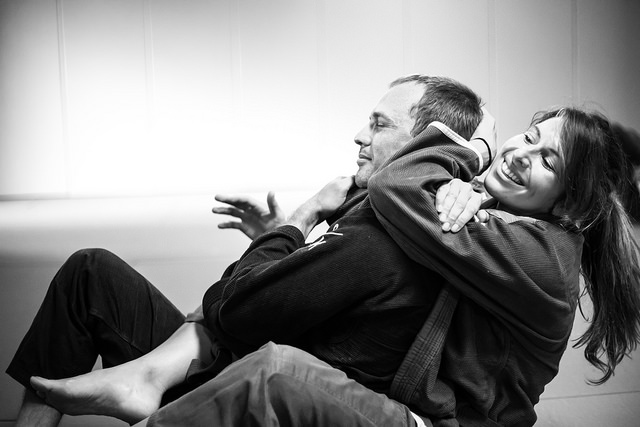
In closing, I believe that anyone and everyone can benefit from training BJJ. Whether you train for thirty days or the rest of your life, BJJ can give you the skills to overcome any adversities this crazy thing called life throws at you. Even though I have said that BJJ is for everyone–know that BJJ is a serious commitment, injuries do happen, and the journey is not easy. However, if you are sick of the same mundane workout, want to increase your self-worth, or just want to be able to defend yourself, BJJ is for you! So get up off your couch and become the best version of yourself that is humanly possible! For me, that person is someone who will always be involved in the BJJ community and I truly hope to see you on the mats.
Sources and Recommended Reading:
“Rorion Gracie and the Day He Created the UFC.” Guilherme Cruz.
The Ultimate Guide to Brazilian Jiu Jitsu. Sarah Dzida, et. al.
Gracie Jiu-Jitsu. Helio Gracie.
Mastering JuJitsu. Renzo Gracie and John Danaher.
“The Psychology of Brazilian Jiu-Jitsu.” David J. Ley.


